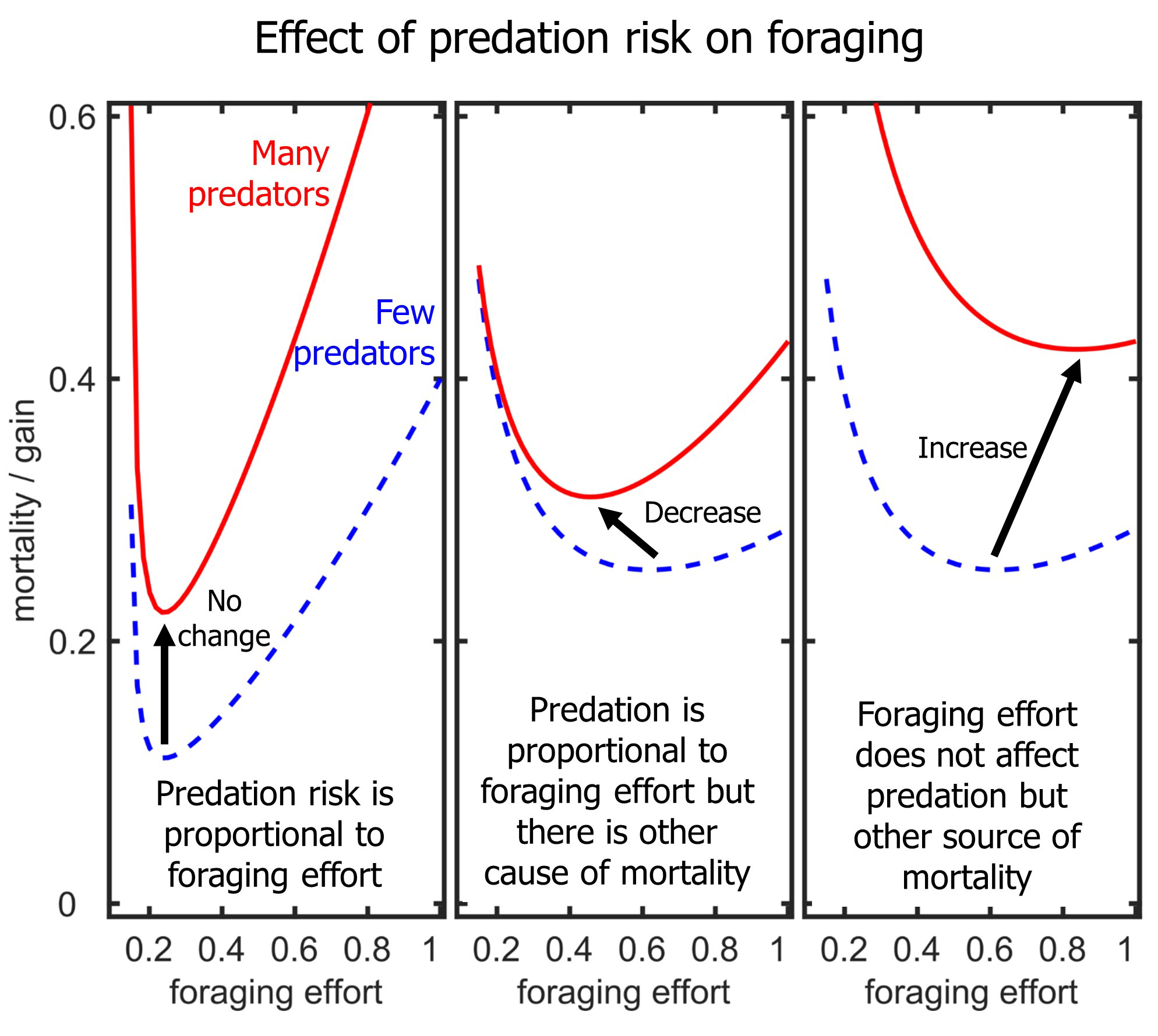When predation risk increases animals may increase, decrease or not change their foraging behaviour depending on how their behaviour affects the risk
Background
When looking for and consuming food animals are often at higher risk of being found and killed by a predator. They often have to then decide how much risk to put up with to get enough food or grow quickly. They must choose places to forage, how vigilant for attack to be, or even how big a group live in because there is safety in numbers but also competition for food. Animals may change in state such as size or fat reserves, and these may affect how much risk they should take. We need to be understood how their behaviour affects their gain and risk in order to understand why they do what they do.
Findings
In this paper there are many models of different situations where there is a trade-off between food consumption and mortality risk. One of the most important is a model of how increasing predation risk might affect animals foraging and so their growth rate. In this case it can be assumed that an animal would try to minimise the mortality risk for every unit increase in size or energy gained. The model shows that whether foraging and growth rate decreases or increases when the predation risk increases depends on how the foragers behaviour affects the risk. If mortality is the foraging effort multiplied by the predator density then the growth rate should not change. If mortality is the foraging effort multiplied by the predator density and there is some additional mortality risk then the growth rate should decrease. If the effect of predator density on mortality does not depend on foraging then animals should increase their growth rate.
Implications
This result shows that we should not always expect animals to forage less when the apparent predation risk increases. It depends on how much changes in their foraging and growth rate affects their mortality risk. In some situations predation will strongly depend on foraging, such as when predators sit-and-wait and so searching prey will encounter more the more they are active. On the other hand, if predators search for prey everywhere then prey may face the same risk whether or not they are active, so they should try to grow more quickly. Overall, it is really important to understand how the behaviour of both predators and prey affect the predation rate if we want to predict how their interactions affects their lives.
Subject
Behavioural ecology
Subject Group
Zoology and Ecology
Keywords
predation


